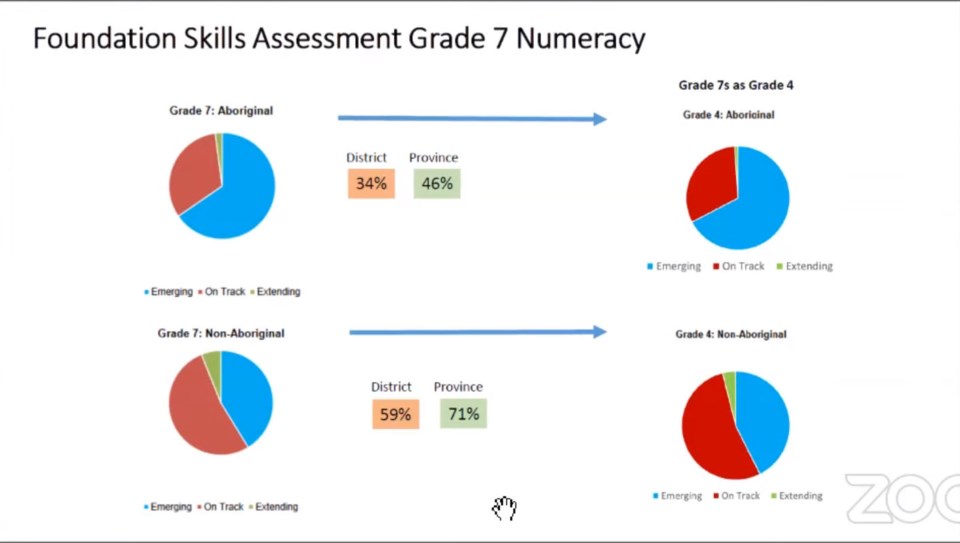Grade 7 students in School District 57 performed below the B.C. average in all three areas measured by the 2020/21 Foundation Skills Assessment (FSA), according to data reported to the district board of education on Tuesday.
District superintendent Cindy Heitman presented the data as part of the district’s reporting on Indigenous education outcomes – looking at the performance gap between Indigenous and non-Indigenous students.
“I’m proud to say that School District 57 has a high participation rate in the FSAs,” Heitman said. “(So) when we look at our FSA results, it is a fairly good representation of our students.”
Only 56 per cent of Indigenous and 74 per cent of non-Indigenous Grade 7 students were reading at or above grade level. The B.C average was 81 per cent for non-Indigenous students and 62 per cent for Indigenous students.
Sixty-one per cent of Indigenous and 75 per cent of non-Indigenous students in the district wrote at or above grade level. Across the province, 87 per cent of non-Indigenous and 73 per cent of Indigenous students met the standard.
However, it was numeracy – the ability to understand and work with numbers – where the district’s students were the furthest behind. Only 34 per cent of Indigenous students and 59 per cent of non-Indigenous students in the district were at or above grade level.
The B.C. average for non-Indigenous students was 71 per cent, and 46 per cent for Indigenous students.
“That is not okay,” Heitman said. “We have much to do in the area of numeracy.”
The district’s Grade 4 students performed better in the reading and writing portion of the FSA. Eighty-one per cent of the district’s non-Indigenous students were reading at grade level, just below the 84 per cent provincial average. Their writing scores equaled the provincial average of 83 per cent at or above grade level.
Seventy-two per cent of Indigenous students read at or above grade level (equal to the provincial average) and 79 per cent wrote at or above grade level (ahead of the provincial average of 70 per cent).
Heitman said the literacy gap between younger Indigenous and non-Indigenous in the district has been getting smaller over the past several years.
“Our district and our teachers have done an incredible job in our primary grades with reading intervention – bringing in new instructional strategies. We’ve invested a lot of resources, financial resources, in additional learning material for our students,” Heitman said. “If a student is struggling in the reading portion of the FSA in Grade 4, that student is not successful in English 10 – we know that.”
The district’s Grade 4 students lagged behind the provincial average in numeracy – with 45 per cent of Indigenous and 65 per cent of non-Indigenous meeting or exceeding grade level. In B.C., an average of 75 per cent of non-Indigenous students and 56 per cent of Indigenous students made the grade.
Heitman cautioned the board that the FSA standardized tests – given annually to students in Grade 4 and Grade 7 - are only one source of data about student performance. Heitman said she plans to bring a more comprehensive report, looking at multiple data sources, back to the board in June as part of the district’s strategic planning efforts.
“We have some real challenges in that data,” trustee Ron Polillo said. “But if you don’t know where you are, you don’t know where you need to go.”
Trustee Rachael Weber said she’s concerned about the province’s “no fail policy” which sees students get advanced to the next grade, even when they are not ready.
Chairperson Sharel Warrington, a former teacher in the district, said the district needs “to be data savvy” and look at more sources of information than just the FSAs. Participation in the FSAs in many other school districts is far lower than in School District 57, she added.
“I have to give credit to our teachers. I know the Foundation Skills Assessment is not popular, but they do the work,” Warrington said. “(But) we need to put more supports in place. What do we need to do differently? We are hearing that message over and over again.”



